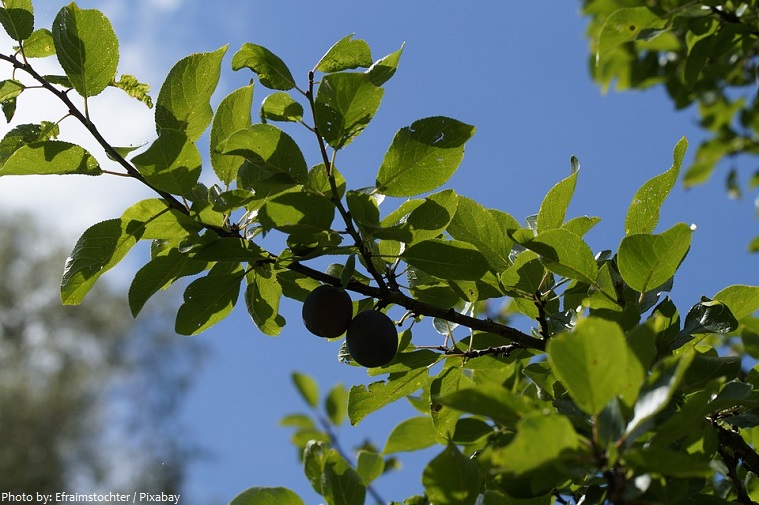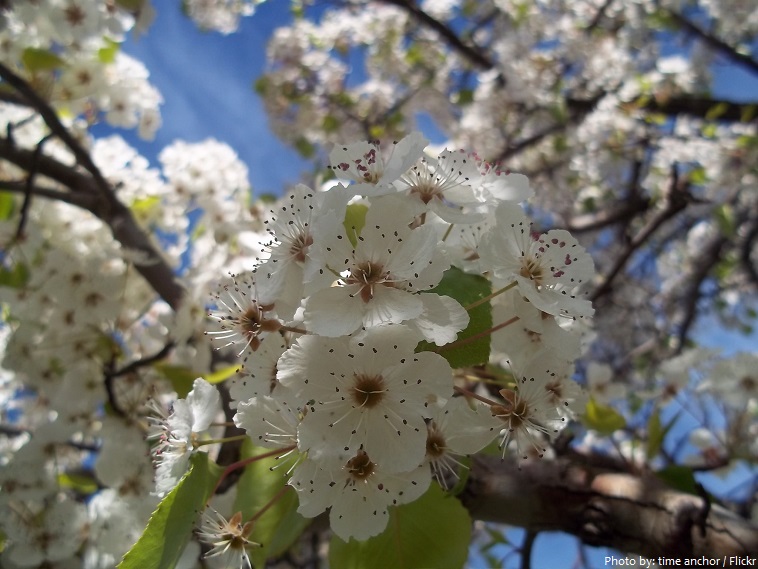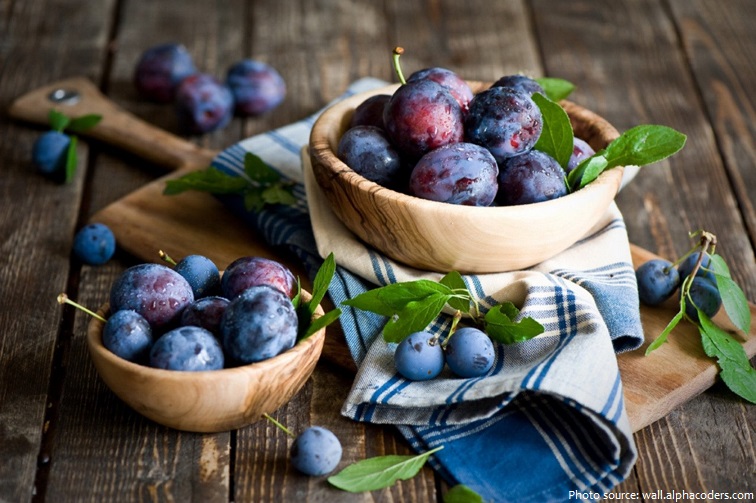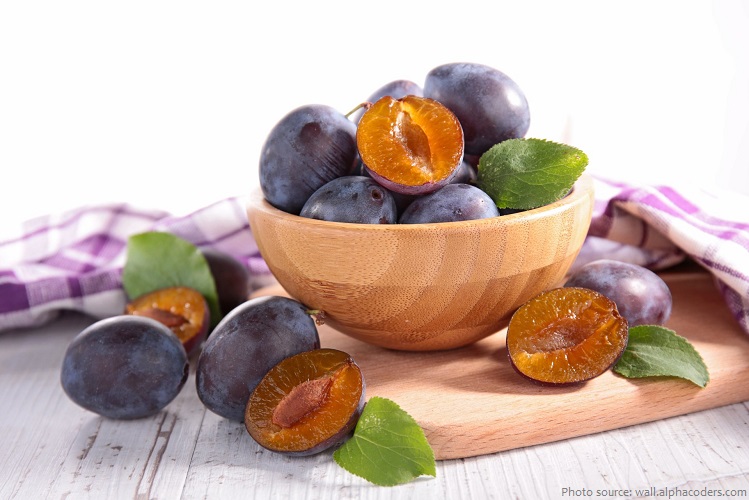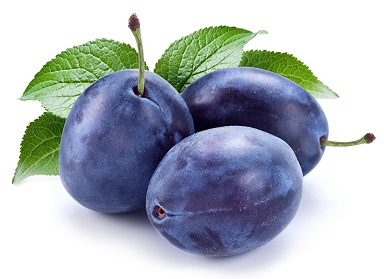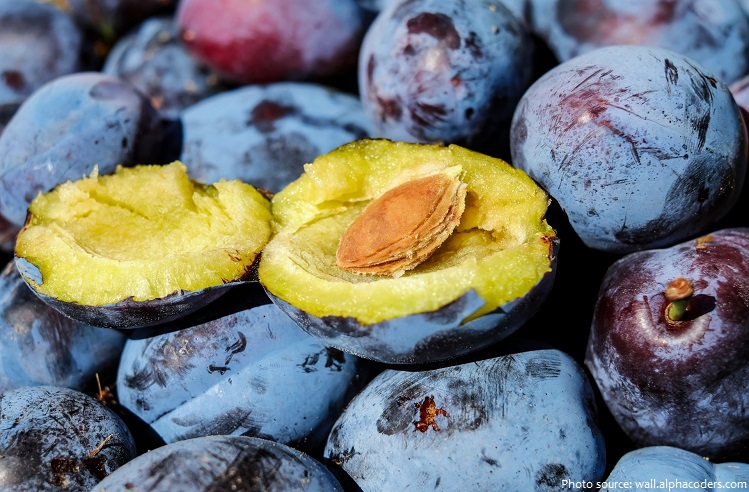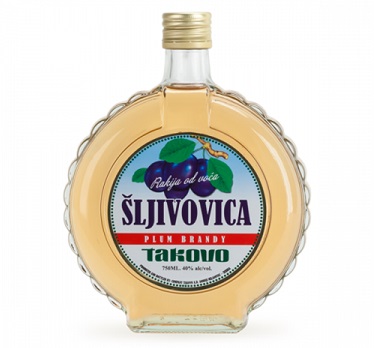Plums are delicious fruits that belong to the genus Prunus (stone fruits).
They may have been one of the first fruits domesticated by humans.
Plum remains have been found in Neolithic age archaeological sites along with olives, grapes and figs.
Plum has many species, and taxonomists differ on the count. Depending on the taxonomist, between 19 and 40 species of plum exist. From this diversity only two species, the hexaploid European plum (Prunus domestica) and the diploid Japanese plum (Prunus salicina and hybrids), are of worldwide commercial significance.
Plum trees are grown on every continent except Antarctica. They are most commonly planted in temperate zones.
The average lifespan for cultivated plum trees is 10 to 15 years.
The commercially important plum trees are medium-sized, usually pruned to 5–6 meters (16-20 feet) height. Without pruning, the trees can reach 12 meters (39 feet) in height and spread across 10 meters (33 feet).
Some plum varieties have leaves that are oblong in shape with a pointed tip while others have oval leaves that are serrated on the edges. Leaves are usually 5 to 10 centimeters (2 to 4 inches) long and green in color.
The flower buds on most varieties are borne on short spurs or along the terminal shoots of the main branches. Each bud may contain from one to five flowers, two or three being most common, and often give an appearance of densely packed, showy flower clusters when the trees are in full bloom.
Fruits are usually of medium size, between 2.5 and 7.5 centimeters (1 and 3 inches) in diameter, globose to oval. The flesh is firm and juicy. The fruit’s peel is smooth, with a natural waxy surface that adheres to the flesh. The color of the peel varies from bluish-black to red, purple, green or yellow.
The plum is a drupe or stone fruit, meaning its fleshy fruit surrounds a single hard seed.
Like most fruit, plums are low in calories, protein and fats.
In a 100-gram (3.5 oz) amount, raw plums supply 46 Calories and are composed of 87% water, 11% carbohydrates, 1% protein, and less than 1% fat.
Plums contain an assortment of healthy components, vitamins and minerals. They are an excellent source vitamin C. Plums are also a good source of vitamin A, vitamin K, vitamin B1, B2, B3, B6, B9 and vitamin E. The minerals present in them include potassium, fluoride, phosphorous, magnesium, iron, calcium and zinc. They are also filled with dietary fiber, sorbitol and isatin.
The health benefits of plums include relief from indigestion, influenza infection, and anxiety-related problems.
The antioxidant power of plums also helps in treating ailments such as osteoporosis, macular degeneration, cancer, diabetes, obesity and slow the development of Alzheimer’s disease.
Plums also contain anthocyanin and quercetin, beneficial for preventing brain cell breakdown.
Plums have a low glycemic index, so eating plums can help you control your blood sugar and reduce the risk of type 2 diabetes according to the Dietitians of Canada.
Plums are widely eaten fresh as a dessert fruit. The taste of the plum fruit ranges from sweet to tart.
Plums can be cooked as compote or jam, or baked in a variety of pastries.
In the Balkans, especially in Serbia plum is converted into an alcoholic drink named slivovitz (Serbian: šljivovica). Šljivovica is the national drink of Serbia in domestic production for centuries, and plum is the national fruit.
Plum liquor, also known as “plum wine”, is popular in both Japan and Korea, and is also produced in China. Plum wine is normally made with distilled liquor and soaked with plum.
In central England, a cider-like alcoholic beverage known as plum jerkum is made from plums.
Plum varieties that can be dried without resulting in fermentation are called prunes. Such plums have firm flesh and contain high levels of sugar, qualities that favour their being preserved by drying, which is done in dehydrators or in the sun.
China is the world’s leading producer of plums accounting for about half of world production. Other major producers are Romania, Serbia, and Iran.
The Serbian plum is the third most produced in the world.
There are also species of New World origin such as Prunus americana. However, while these were utilized by Native Americans, most cultivated plums in the United States are the Japanese or
European species.
The plum is a member of the rose family and is a close relative of peaches, apricots and cherries.
The plum blossom or meihua, along with the peony, are considered traditional floral emblems of China.
The plum tree was significant in Chinese mythology. It was often carved on jade and was associated with wisdom.
The name plum derived from Old English plume or “plum, plum tree,” which extended from Germanic language or Middle Dutch, prume, and Latin, prunum.
“You can’t evoke great spirits and eat plums at the same time.” – George William Russell


